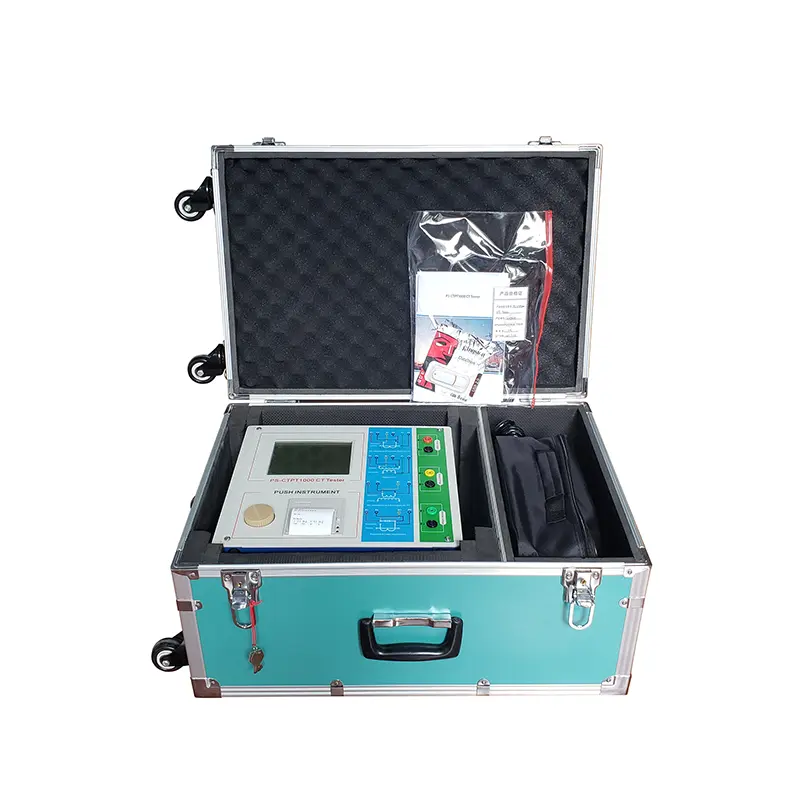Regular testing of current transformers (CTs) and potential transformers (PTs) is crucial to ensure the accuracy, safety, and longevity of electrical systems. CT/PT testers play a vital role in evaluating the performance and reliability of these transformers. By using these specialized devices, technicians and engineers can identify any issues or abnormalities, allowing for timely maintenance or replacement.
Understanding CT/PT Testers:

CT PT tester are specialized devices used to evaluate the performance and accuracy of current transformers and potential transformers. These testers enable technicians and engineers to assess various parameters, such as ratio, phase angle error, burden measurement, and insulation resistance. By conducting thorough tests, any potential issues or abnormalities within the transformers can be identified and addressed promptly, ensuring optimal performance and safety.
The Importance of Current Transformer Testing:
Accuracy Assurance: Current transformer tester are responsible for measuring and scaling electrical currents for measurement and protection purposes. Testing CTs ensures that they accurately convert primary currents to secondary currents, maintaining measurement precision and reliability.
Safety Verification: Faulty or malfunctioning CTs can pose significant safety risks. Testing helps identify potential issues, such as insulation breakdown, short circuits, or incorrect ratios, ensuring the safe operation of electrical systems and preventing accidents or damage.
Equipment Longevity: Regular testing helps detect any degradation or wear and tear in CTs, allowing for timely maintenance or replacement. By addressing issues promptly, the lifespan of the transformers can be extended, reducing the risk of unexpected failures.
Compliance with Standards: Testing CTs is essential to comply with industry standards, such as the International Electrotechnical Commission (IEC) and the Institute of Electrical and Electronics Engineers (IEEE). Adhering to these standards ensures that electrical systems meet the required performance and safety criteria.
Key Features and Benefits of CT/PT Testers:
Ratio Measurement: CT/PT testers accurately measure the turns ratio between primary and secondary windings, ensuring the transformers’ accuracy in converting currents or voltages.
Phase Angle Error Measurement: These testers assess the phase difference between primary and secondary windings, ensuring precise synchronization of electrical measurements.
Burden Measurement: CT/PT testers evaluate the burden or impedance connected to the secondary winding, ensuring that the transformers can handle the load without significant voltage drops or measurement errors.
Insulation Resistance Testing: CT/PT testers measure the insulation resistance of the transformers, detecting any degradation or breakdown that may compromise the safety and accuracy of the electrical system.
Real-time Data Analysis: Modern CT/PT testers offer advanced features, such as data logging and real-time analysis, allowing technicians to monitor and analyze test results efficiently.
Portable and User-Friendly: CT/PT testers are designed to be portable and user-friendly, enabling technicians to perform tests easily on-site, reducing downtime and increasing efficiency.
Where to Find CT/PT Testers:
When it comes to purchasing CT/PT testers, it is crucial to find a reliable supplier that offers high-quality products. Here are a few options:
Industrial Equipment Suppliers: Many industrial equipment suppliers specialize in providing a wide range of testing and measurement devices, including CT/PT testers. Look for reputable suppliers with experience and a strong track record in the industry.
Online Marketplaces: Online marketplaces offer a convenient platform to explore and compare different CT/PT testers. Ensure that the sellers on these platforms have positive reviews and offer reliable customer service.
Manufacturer’s Websites: CT/PT tester manufacturers often have their own websites where they showcase their products. Visiting their websites provides detailed information about the available options, specifications, and contact details for purchasing inquiries.